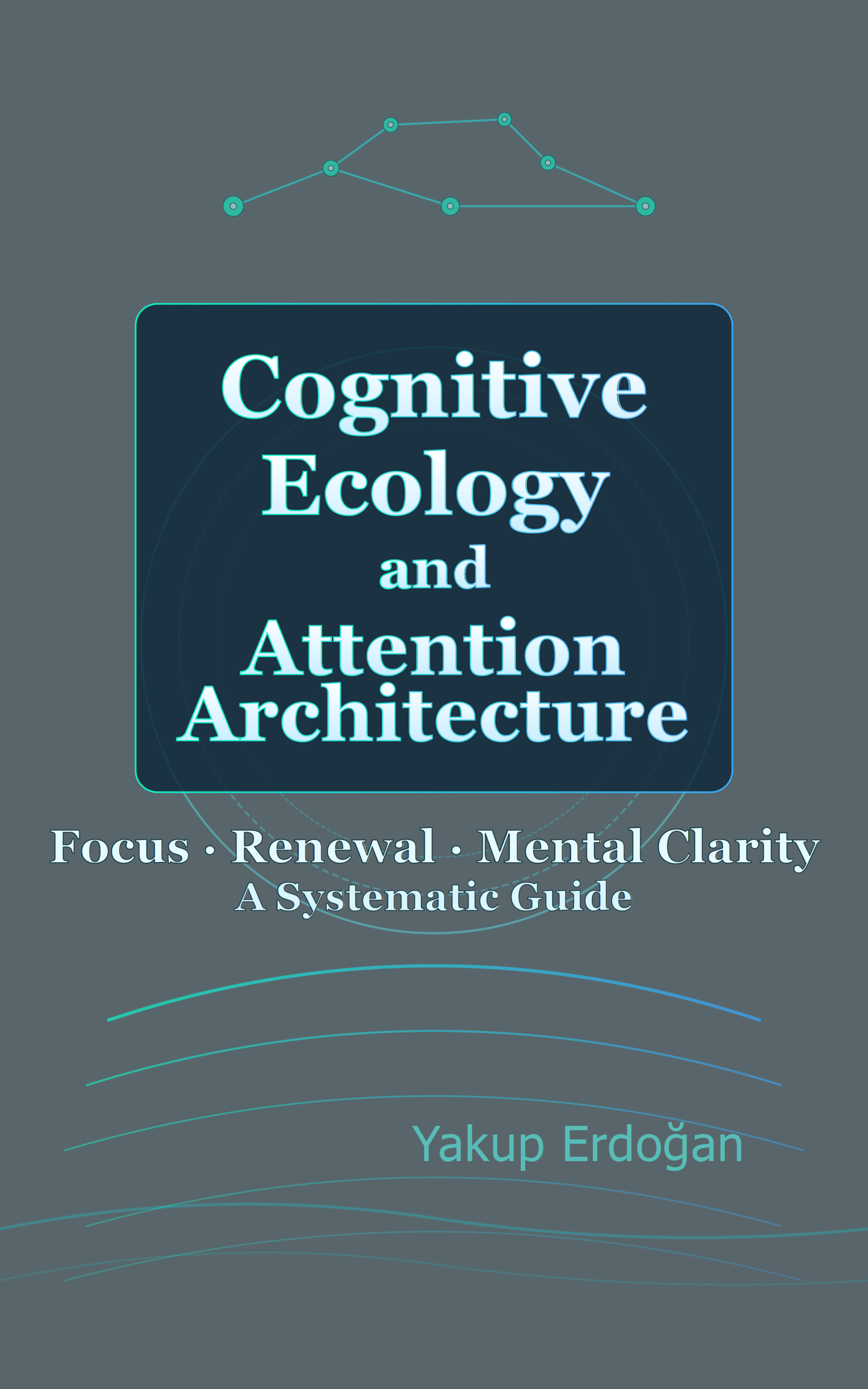Cognitive Ecology and Attention Architecture
By Yakup Erdoğan • Aug 18, 2025

An exploration of how attention systems shape cognition across environments.
Preview
You may be opening this book at the end of a day that felt crammed, yet produced little that feels meaningful. That gap between effort sensation and real output is rarely laziness; it is usually the signature of an un-designed cognitive environment.
Loss of focus is often framed as a personal flaw. Through an ecological lens it becomes a systems issue: attention, working memory load, emotional tone, physical light and sound, digital notification loops, and subtle social expectations co-evolve. Change one node, ripples appear elsewhere.
Cognitive ecology is the dynamic mesh of internal processes (focus, affect, micro-beliefs), proximal environment (light color, posture ergonomics, visual clutter), and socio-digital currents (response latency norms, platform reward schedules). Treating attention like a single muscle ignores these feedback loops.
This book is organized around three macro movements: Reveal (make the invisible visible by measuring, naming, logging); Refine & Nourish (prune noisy, low meaning inputs while feeding depth, synthesis, recovery); and Integrate & Sustain (rituals, renewal cycles, light instrumentation that keeps drift detectable).
What follows is not clinical therapy. If you face trauma, severe depression, or acute anxiety, professional care is essential. The material here targets functional attention erosion—diffuse distraction, context fragmentation, shallow fatigue.
Recommended reading posture: do not binge. Skim a chapter, pick one micro practice, run a 5–7 day experiment, record two or three simple metrics, keep only what moves a needle. Let the text become a living field manual annotated in your own vocabulary, not a one-time consumed resource.
The destination is not a frictionless calendar; it is a self-correcting ecosystem that detects early drift, responds with minimal force, and avoids guilt spirals. Designing attention is designing quality of life infrastructure.
We begin by surfacing the invisible climate you inhabit.
Case: Two Weeks of Small Levers
A client reported, “I am exhausted but nothing truly moved.” Two weeks of only three interventions—morning 90-minute notification-free corridor, six daily micro renewed breaths, and an evening handover sentence—raised deep blocks from 2 to 4 per day and reduced “empty fatigue” reports by over half. Small systemic levers outperformed brute force willpower.
Metaphor: Fog and Map
Before instrumentation, your cognitive terrain is a foggy valley. Naming interruption types and tone labels is like clearing narrow visibility slices until contours emerge. Direction choices become evidence-based rather than hope-based.
Expectation Calibration
Early measurement can feel like regression: you notice fragments that previously slid under awareness. That is progress signal, not failure. Reduction and nourishment phases may briefly elevate restlessness; a new equilibrium stabilizes if changes remain small and testable.
Starter Set
If uncertain where to start: one morning intent sentence, a single protected deep corridor, one micro renewal (wide gaze + extended exhale) mid block, an evening closure note, and a weekly 10-minute dashboard review. Layer only after three consecutive stable days.
[MICRO]
Micro PracticeMicro Practice: 7-Day Starter Log – Morning single-sentence intent, midday 90s wide-gaze + 1-word tone label, evening progress + adjustment sentence.
[LEARNING]
Learning ObjectiveLearning Objective: Reframe early “I feel more scattered” signals as data acquisition, and commit to small instrumentation before structural overhauls.
Yakup Erdoğan